One of the India's leading companies in solar plant monitoring system.
Don't wanna be here? Send us removal request.
Text
Benefits of Using Pyranometer Data Loggers
1. Improved Performance Monitoring
Pyranometer data loggers provide accurate and real-time solar radiation data, enabling solar plant operators and researchers to monitor performance effectively. By understanding how environmental conditions impact solar energy generation, operators can make informed adjustments to optimize output.
2. Enhanced Data Accuracy
The integration of a data logger with a pyranometer minimizes human error in data collection. Automated data logging ensures consistent measurements and reliable data, which are crucial for accurate performance assessments.
3. Long-Term Data Storage
Pyranometer data loggers are capable of storing extensive datasets over long periods. This long-term data is essential for identifying trends, seasonal variations, and the overall efficiency of solar energy systems.
4. Remote Monitoring Capabilities
Many modern pyranometer data loggers are equipped with wireless communication features, allowing for remote monitoring. Users can access real-time data from anywhere, facilitating timely decision-making and adjustments.
5. Cost-Effectiveness
Investing in a pyranometer data logger can lead to long-term savings. By optimizing solar energy production through accurate monitoring, operators can maximize energy yield and minimize operational costs.
Applications of Pyranometer Data Loggers
1. Solar Energy Assessment
Pyranometer data loggers are essential for evaluating the solar energy potential of a site before the installation of solar panels. This data helps determine the feasibility and expected output of solar projects.
2. Performance Analysis of Solar Plants
Solar plant operators use pyranometer data loggers to monitor and analyze the performance of their solar energy systems. By comparing solar radiation data with energy output, operators can identify inefficiencies and implement corrective measures.
3. Research and Development
In academic and research settings, pyranometer data loggers are used to study solar energy trends, environmental impacts, and the effectiveness of different solar technologies. This research is crucial for advancing solar energy solutions.
4. Agricultural Applications
Farmers utilize pyranometer data loggers to monitor solar radiation levels for optimizing crop growth. Understanding sunlight exposure can help farmers make informed decisions about irrigation and planting schedules.
5. Building Energy Management
In building energy management systems, pyranometer data loggers help optimize the use of natural light and solar heat. By monitoring solar radiation, building managers can improve energy efficiency and reduce costs.
Conclusion
Pyranometer data loggers are vital tools in the solar energy landscape, providing accurate and continuous measurements of solar radiation. By integrating data logging capabilities with solar radiation sensors, these devices enhance performance monitoring, data accuracy, and decision-making in solar energy systems.
As the demand for renewable energy grows, the importance of effective solar radiation measurement will only increase. Investing in a pyranometer data logger not only supports the optimization of solar energy production but also contributes to the broader goal of sustainable energy practices. By harnessing the power of accurate data, stakeholders can make informed decisions that propel the solar energy industry forward, ensuring a cleaner and more sustainable future.
0 notes
Text
Understanding Solar Monitoring: Maximizing the Efficiency of Solar Energy Systems
As the demand for renewable energy continues to rise, solar power has emerged as a leading solution for sustainable electricity generation. However, to ensure that solar energy systems perform at their best, effective monitoring is essential. Solar monitoring refers to the process of tracking the performance of solar energy systems, providing valuable insights into energy generation, consumption, and overall system health. In this blog post, we will explore the importance, components, benefits, and future of solar monitoring.
What is Solar Monitoring?
Solar monitoring involves the use of advanced technology to track the performance of solar photovoltaic (PV) systems. This includes monitoring solar panel output, energy production, and system efficiency over time. Solar monitoring systems collect data on various performance metrics, allowing users to assess how well their solar energy systems are operating and identify potential issues.
Key Components of Solar Monitoring
Data Acquisition System (DAS): This system collects data from various components of the solar installation, including solar panels, inverters, and batteries. The DAS is responsible for gathering real-time information on energy generation and system performance.
Inverters: Inverters convert the direct current (DC) generated by solar panels into alternating current (AC) for use in homes and businesses. Many modern inverters come equipped with built-in monitoring capabilities, providing insights into their performance.
Monitoring Software: This software analyzes the data collected by the DAS and provides users with a user-friendly interface to visualize performance metrics. Many solar monitoring platforms offer web and mobile applications for easy access to information.
Sensors: Various sensors, such as irradiance sensors and temperature sensors, are used to collect environmental data that can impact solar panel performance. This information helps in assessing how weather conditions affect energy generation.
Importance of Solar Monitoring
Performance Optimization: By continuously monitoring solar systems, users can identify inefficiencies and optimize performance. This allows for timely interventions, such as cleaning panels or adjusting settings, to enhance energy generation.
Preventive Maintenance: Regular monitoring helps in detecting potential issues before they become significant problems. For example, identifying underperforming panels can prompt maintenance or replacement, ensuring the system operates at peak efficiency.
Real-Time Data Access: Solar monitoring provides real-time access to performance data, enabling users to track energy production and consumption. This information is valuable for understanding energy usage patterns and maximizing self-consumption.
Financial Insights: Monitoring solar systems can help users track their return on investment (ROI) by analyzing energy savings and production data. This information is essential for evaluating the financial benefits of solar energy systems.
Environmental Impact: By understanding energy generation and usage, users can better appreciate the positive environmental impact of their solar installations. Solar monitoring helps in quantifying the reduction in carbon emissions achieved through renewable energy use.
Benefits of Solar Monitoring
Enhanced Efficiency: Continuous monitoring helps ensure solar systems operate at optimal efficiency, maximizing energy production and savings.
Increased Longevity: Regular performance assessments and preventive maintenance extend the lifespan of solar installations, protecting the initial investment.
User Empowerment: Solar monitoring platforms often provide users with insights into their energy usage, empowering them to make informed decisions about energy consumption and sustainability.
Remote Monitoring: Many solar monitoring systems allow for remote access, enabling users to track their systems from anywhere in the world. This convenience is especially valuable for large-scale solar installations.
Data Analytics: Advanced solar monitoring systems offer data analytics capabilities, providing users with detailed reports and visualizations to better understand their energy production and consumption trends.
Future of Solar Monitoring
The future of solar monitoring is bright, with technological advancements paving the way for more sophisticated and user-friendly systems. Key trends to watch for include:
Integration with Smart Home Technology: As smart homes become more popular, solar monitoring systems will increasingly integrate with other smart devices, allowing for seamless energy management.
Artificial Intelligence (AI) and Machine Learning: The use of AI and machine learning in solar monitoring can help identify patterns and predict performance issues, enabling proactive maintenance strategies.
Enhanced Data Visualization: Future solar monitoring platforms will likely feature improved data visualization tools, making it easier for users to interpret performance metrics and take action.
Blockchain for Energy Trading: The integration of blockchain technology may allow users to trade excess energy generated by their solar systems, creating new opportunities for revenue generation.
Conclusion
Solar monitoring is a crucial component of any solar energy system, ensuring optimal performance and maximizing the benefits of renewable energy. By tracking performance metrics, users can enhance efficiency, prevent issues, and better understand the financial and environmental impact of their solar investments.
As technology continues to evolve, the future of solar monitoring promises even more advanced solutions that empower users and contribute to a more sustainable energy landscape. Embrace solar monitoring and take full advantage of the sun’s potential while making a positive impact on the planet!
0 notes
Text
The field of weather monitoring systems has evolved significantly, moving from traditional sources like local news and aviation services to easily accessible smartphone applications. IoT-based technology has revolutionized weather monitoring, offering remote monitoring and advanced analytics. These systems rely on IoT devices to measure physical parameters, uploading data to the cloud for analysis.
0 notes
Text
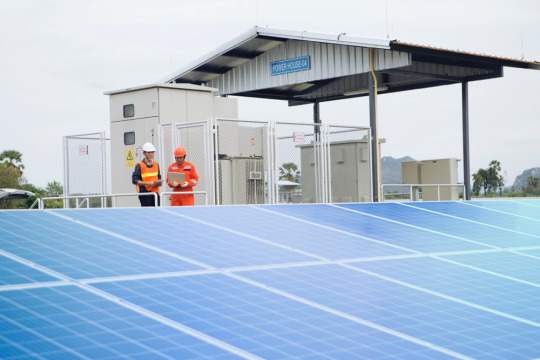
Discover the cutting-edge remote monitoring system designed to revolutionize solar power management. Our innovative solution empowers solar energy operators to remotely oversee and optimize solar panels' performance, ensuring maximum efficiency and sustainability. By harnessing real-time data analytics, predictive maintenance, and advanced fault detection, our remote monitoring system ensures minimal downtime and increased energy output.
0 notes
Text
Enhancing Energy Efficiency with Cutting-Edge Wind Speed Sensors and PowerAMR Technology
Maximize energy efficiency and optimize power generation with our advanced wind speed sensor and PowerAMR technology. Our state-of-the-art wind speed sensor accurately measures wind conditions, allowing precise adjustments to turbine operations for optimal energy output. Paired with our PowerAMR system, you gain real-time insights into energy consumption patterns, enabling informed decisions to minimize wastage and reduce costs.
0 notes
Text
Monitor Water Flow with PowerAMR's Water Flow Meter Monitoring
Stay informed about your water usage with PowerAMR's advanced water flow meter monitoring system. Track and manage water flow efficiently to optimize consumption and identify potential leaks.
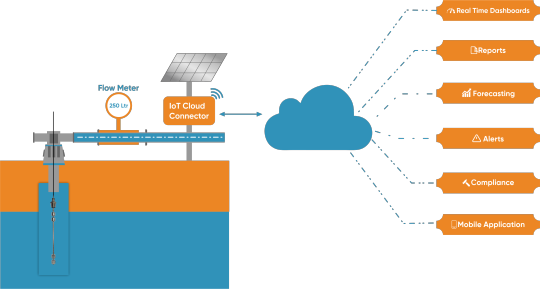
0 notes
Text
issuu
Discover the fascinating technology behind PowerAMR Weather Monitoring Sensors and learn how these innovative devices revolutionize weather forecasting. Uncover the inner workings of these advanced weather monitoring sensors, designed to capture precise meteorological data in real-time. Gain insights into the intricate mechanisms and advanced algorithms that power these sensors, enabling accurate and reliable weather predictions.
0 notes
Text
https://poweramr.in/energy-management-system
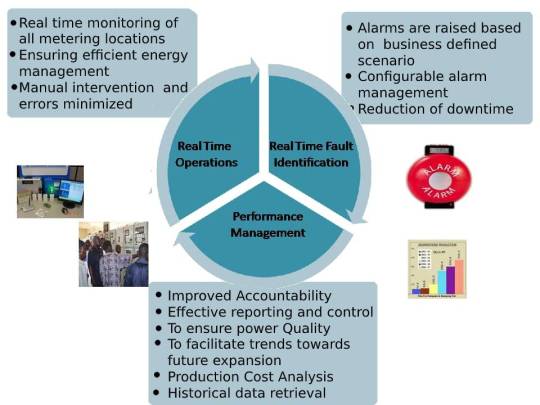
Discover the power of an energy monitoring system for efficient energy management. Our solutions provide real-time data, insights, and control to optimize energy consumption and reduce costs.
0 notes
Text
https://poweramr.in/zero_export
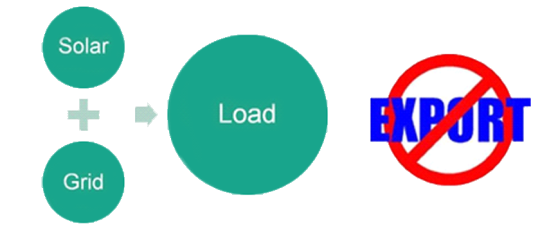
Take control of your energy consumption and maximize the efficiency of your power system with a cutting-edge zero export device. Designed to harness renewable energy sources effectively, this device allows you to optimize your energy usage without relying on the grid. By preventing excess energy from being exported, you can store and utilize it intelligently, reducing both your carbon footprint and electricity costs. Embrace the future of energy management and unlock the full potential of your sustainable power generation with a zero export device.
0 notes
Text
https://poweramr.in/weather-station
Gain deeper insights into weather patterns and make informed decisions with our advanced weather monitoring system. Stay ahead of changing conditions.
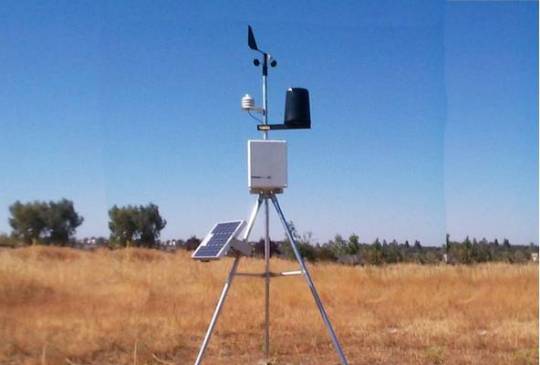
0 notes
Text
Real-Time Solar Power Monitoring Solutions
Unlock the potential of your solar power system with our real-time monitoring solutions. Keep track of energy generation, detect anomalies, and ensure peak performance for a sustainable and efficient solar setup.
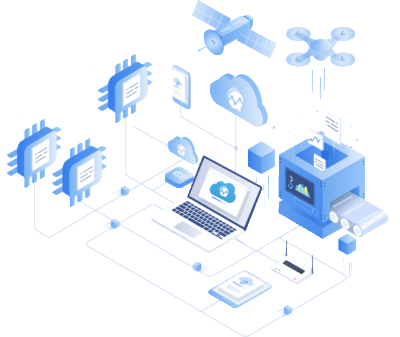
1 note
·
View note
Text
Pyranometer- Why to Measure Accurate Solar Irradiance ?
The Solar Radiation Sensor, or solar pyranometer, measures global radiation, the sum at the point of measurement of both the direct and diffuse components of solar irradiance.
In-plane irradiance received by the PV array is one of the most important and significant factors that directly impacts the PV Performance. Irradiance must be measured accurately to determine your optimal PV performance ratio.
Our pyranometers ensure the highest accuracy in Irradiance measurements and are suited to provide both-
· Global horizontal irradiance
· Irradiance on collector plane
Global Horizontal Irradiance (GHI) is important because it is the parameter measured in weather and climate networks, derived from satellite instruments and calculated with clear sky energy models.
A pyranometer tilted in the Plane of Array (POA) of the PV modules measures the irradiance available to the cells and is used for calculating energy yield and Performance Ratios. This is why you will often see pyranometers in pairs, one horizontal and one tilted.
The pyranometers are equipped to provide-
· Individually optimised temperature compensation
· Individually measured directional response, with the test results provided
· They are designed for simple maintenance and have a wide range of accessories available
· To offer you the best accuracy when in the field a new calculator is available to provide you with the real-time uncertainty in your application
Pyranometers are most important part of our automated weather station. Logics PowerAMR Platform
supports various reporting features and analysis from pyranometer data-
· Weather Module - The system supports all makes of weather sensors such as pyranometer, Module temperature sensor, ambient temperature and humidity sensors , wind speed sensors ,wind direction sensors, Rain gauge etc.
· PR analysis- In depth analysis of plant performance with reference to weather sensor data and includes PR analysis, PR curve and PR logs of the day, irradiation v/s power curves, irradiation v/s module temperature curves, GHI v/s tilted irradiation etc.
· Plant Performance- helps to check complete health analysis of the solar plant at one glance, also includes key parameters like solar insolation, peak generation, expected energy, specific power, specific yield etc.
· Irradiation v/s power curves - Power production graph comparing with the solar irradiation during the da (available within the same axis for comparison)
· Graphical representation of solar irradiation and active power in the same time axis.
There are various classification of Pyranometers according to ISO 9060:1990 (E), namely –
1) Secondary Standard Pyranometers
2) Second Class Pyranometers
3) First Class Pyranometers
Typical Pyranometer comparison is as listed below-
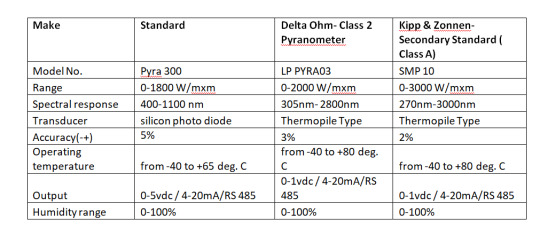
To get the best deals on Pyranometers, please contact @ 8076963066, Download technical specifications of Pyranometer from http://poweramr.in/download-center
1 note
·
View note
Text
PowerAMR Solar Monitoring App Plans
PowerAMR Essentials
· Auto Configurable through server- no need for person to configure through laptop or on site troubleshooting , Plug and Play solution
· Dashboard : Interactive and user friendly dashboard to evaluate the system product at a glance with daily, weekly , monthly ,yearly generation data and current component-wise operational status along with the environment details . Dashboard have the facility of analysis of data in tabular form and graphical comparison.
· Single Line Diagram feature for real time access to plant’s current status
· Flexi Reports and Charts: System is capable to generate general and customized reports. System supports daily, weekly, monthly reports, flexi time reporting architecture. Also facility to export data over a custom time interval to CSV, EXEL, PDF, word format. Reports have the facility to demonstrate instantaneous values ( max, min, averaged values, aggregated sum) over a defined period. Histogram / pie chart/bar graphs/line is available.
· Generation Analysis supported by in depth data and reports including Today’s Generated Energy, Total Generated Energy (Monthly , Yearly etc), Instantaneous Power, Phase wise voltage and current, log reports, voltage, current, power and frequency curves, Plant CUF, Revenue Generation Data, CO2 savings. Provision to record data in a common work sheet chronologically date wise. The data file shall be MS Excel compatible. The data shall be represented in both tabular and graphical form.
· Parameters such as Current and Power, Inverter AC output voltage and current (All 3 phases and lines), AC power (Active, Reactive and Apparent), Power Factor and AC energy (All 3 phases and cumulative) and frequency can be monitored.
· Log report- Stores data at every 10 minute interval for various key parameters which helps user for detail historical analysis and troubleshooting.
· Local data storage helps data pool during period of communication outage, network down
· String and MPPT monitoring- Inverter wise String and MPPT data can be monitored.
PowerAMR Advance
Everything in Essentials, Plus
· Weather Module - The system supports all makes of weather sensors such as pyranometer, Module temperature sensor, ambient temperature and humidity sensors , wind speed sensors ,wind direction sensors, Rain gauge etc.
· Metering Module- Various multi function meters can be integrated with the platform for better comparative and loss analysis.
· PR analysis- In depth analysis of plant performance with reference to weather sensor data and includes PR analysis, PR curve and PR logs, irradiation v/s power curves, irradiation v/s module temperature curves, GHI v/s tilted irradiation etc.
· Plant Performance- helps to check complete health analysis of the solar plant at one glance, also includes key parameters like solar insolation, peak generation, expected energy, specific power, specific yield etc.
· String Monitoring: Reports and graphs for String and array DC Voltage, Current and Power from SCB connected in plant.
· Battery feature with logger helps to capture total on / total off hours per day along with real time outage alerts. SMS alerts to selectable mobile numbers and web portal in case of power outage and power restoration.
· E mail and SMS notifications- E mail and SMS reporting of all plants at the end of the day to specific mobile no and email IDs.
· Switchgear integration – Integrates Relays, Transformer, circuit breaker data.
PowerAMR Enterprise
Everything in Advance, Plus
· Superuser Dashboard : Super user dashboard to monitor multiple solar power plant of different inverter makes over single platform through single login credential . Separate login credential can be generated for different –different user/client to monitor their plant separately through hierarchical region wise, division wise, plant wise selection. Compression of generation data for all plants on single table/platform.
· Intelligent Alarming: Intelligent and combinatorial techniques for filtering alarms are provided so that only important alarms are presented to the operator Alerts features if the PR goes below 80% , CUF less than a certain value, plant not generating/ less generating during time of proper weather condition, etc.
· Third Party server - Provision to share data with your own/ third party server on real time.
· Company Branding- Helps EPC Company and O&M Branding via solar portfolio on real time on large screen.
· Multiple Communication Integration - Option for GSM, Ethernet, RF and wi fi RTUs integration on same platform
· DLMS protocol -Integration with Solar and Net Billing meter of the Discom along with differential feature of Solar v/s Net v/s inverter meter data.
· Role based access and Management- This module helps in creating different type of roles and assign the permission based on their roles.
· Multiple user login- Provision for multiple users to log in to sites with their own login ids
· Mobile app – Helps access all plant through touch of mobile. Very effective tool for instant data access, and instant updates.
To know more visit website of solar monitoring system.
1 note
·
View note